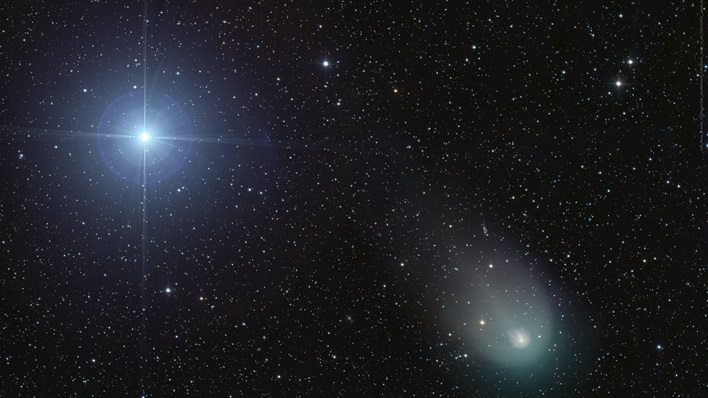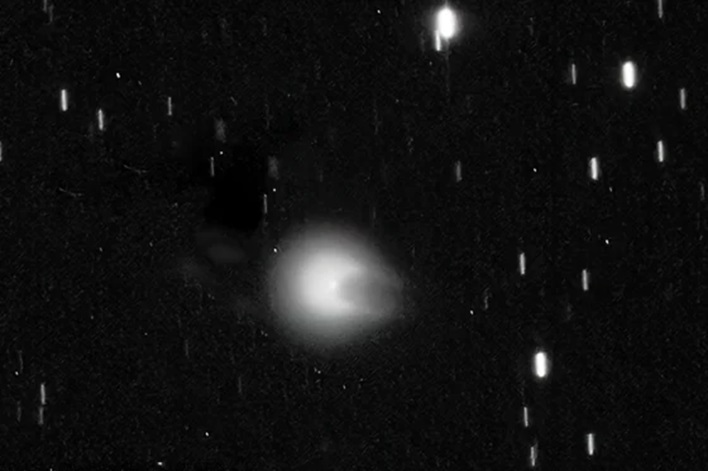Devil Comet Crashes Solar Eclipse Party In Rare Sinister Spectacle

When someone mentions a Halley-type comet, many think of a once-in-a-lifetime event occurring in the night sky. That’s because periodic comets like Halley, and 12P/Pons-Brooks, are only viewable from Earth with the naked eye every 70 years or so. Comet 12P/Pons-Brooks, known for its “horned” appearance, and hence its nickname the “devil comet,” orbits the Sun every 71 years. The iconic comet is also known for its remarkable outbursts of gas and dust while zipping through the inner solar system.

12P/Pons-Brooks derived its scientific name from the first two individuals to detect it in the night sky, Jean-Lous Pons in 1812, and Wiliam Brooks in 1883. The comet comprises a mixture of ice, dust, and rocky material, with the ice transitioning from solid to gas as it nears the Sun. According to Earth.com, this process “propels gas and dust from the comet’s surface and forms an expansive cloud and a distinctive tail.”
Another interesting aspect of 12P/Pons-Brooks is that it is considered a cryovolcanic comet, also known for their cryovolcanoes. A cryovolcano forms on the comet when internal heat builds up, creating a scenario where volatile materials within the comet to vaporize and expand. The process then leads to the rupture of the comet’s surface, providing an escape for the gases and liquids in a powerful cosmic eruption. Scientists use these eruptions as a means of gaining a better understanding of conditions within comets, as well as the role they partake in the formation and evolution of the solar system.
Scientists are also interested in studying comets like 12P/Pons-Brooks for their icy attributes as well. It is thought that these “ancient cosmic icebergs” are remnants from the beginning stages of the solar system, which could provide additional information about the solar system’s structure, and the forces that were at play during that ancient time.
While the “devil comet” is visible now in the northern hemisphere, it is not expected to be viewable by those in the northern part of the globe when it makes its closest approach to Earth in June. Therefore, anyone wanting to partake in the comet’s eclipse party crashing will need to do so before it once again disappears from eye’s view for another 70 years.

